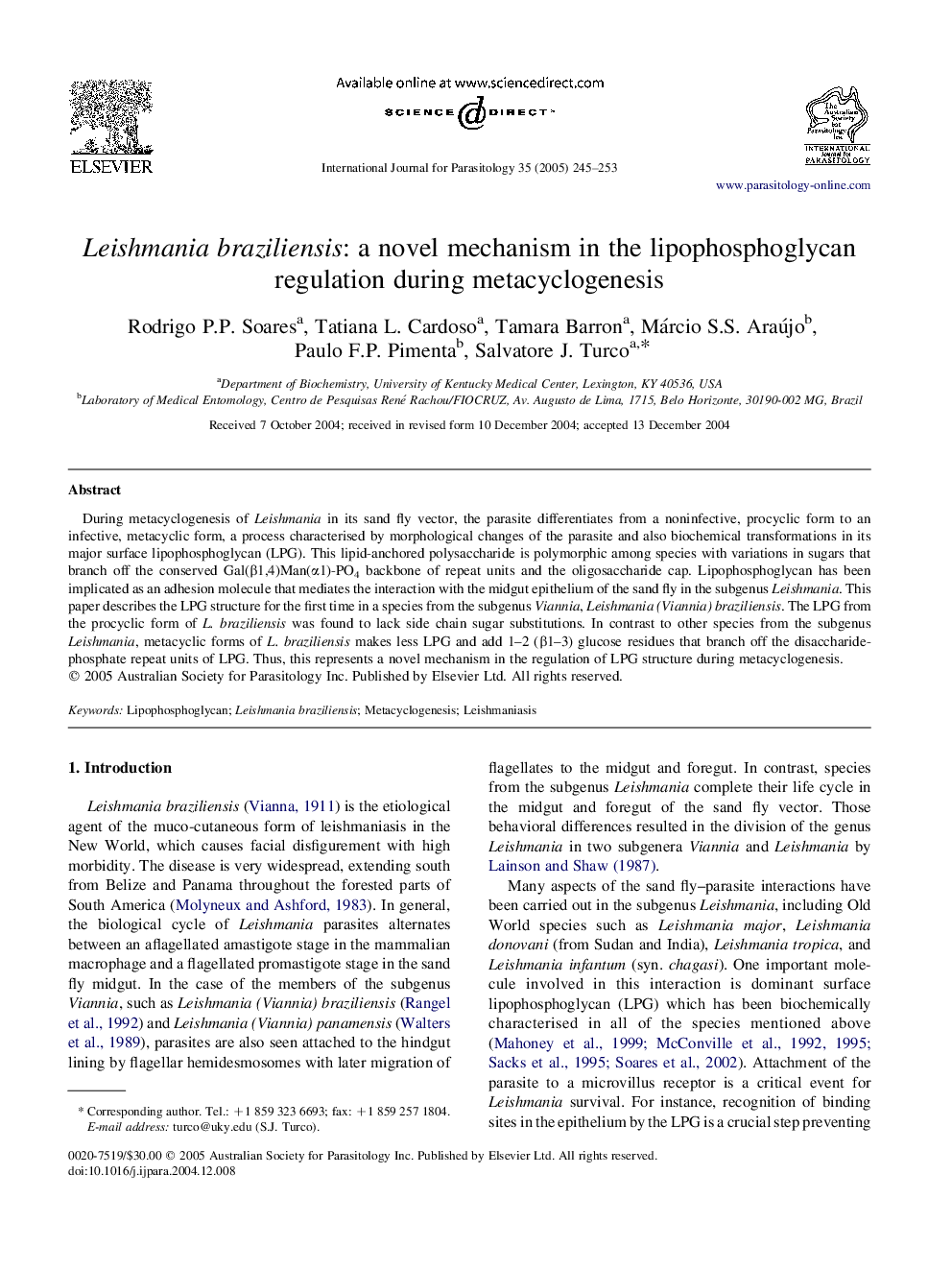| Article ID | Journal | Published Year | Pages | File Type |
|---|---|---|---|---|
| 8979951 | International Journal for Parasitology | 2005 | 9 Pages |
Abstract
During metacyclogenesis of Leishmania in its sand fly vector, the parasite differentiates from a noninfective, procyclic form to an infective, metacyclic form, a process characterised by morphological changes of the parasite and also biochemical transformations in its major surface lipophosphoglycan (LPG). This lipid-anchored polysaccharide is polymorphic among species with variations in sugars that branch off the conserved Gal(β1,4)Man(α1)-PO4 backbone of repeat units and the oligosaccharide cap. Lipophosphoglycan has been implicated as an adhesion molecule that mediates the interaction with the midgut epithelium of the sand fly in the subgenus Leishmania. This paper describes the LPG structure for the first time in a species from the subgenus Viannia, Leishmania (Viannia) braziliensis. The LPG from the procyclic form of L. braziliensis was found to lack side chain sugar substitutions. In contrast to other species from the subgenus Leishmania, metacyclic forms of L. braziliensis makes less LPG and add 1-2 (β1-3) glucose residues that branch off the disaccharide-phosphate repeat units of LPG. Thus, this represents a novel mechanism in the regulation of LPG structure during metacyclogenesis.
Related Topics
Life Sciences
Immunology and Microbiology
Parasitology
Authors
Rodrigo P.P. Soares, Tatiana L. Cardoso, Tamara Barron, Márcio S.S. Araújo, Paulo F.P. Pimenta, Salvatore J. Turco,
